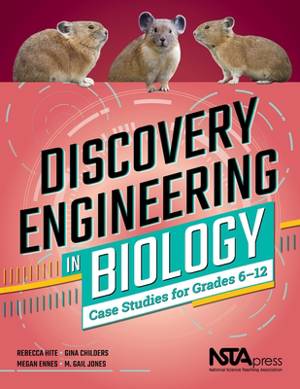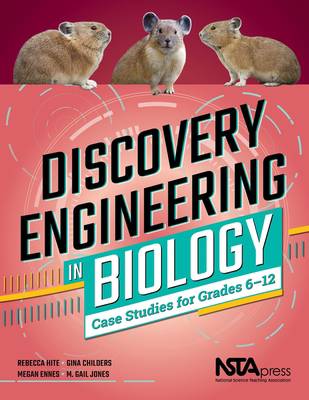
En raison d'une grêve chez bpost, votre commande pourrait être retardée. Vous avez besoin d’un livre rapidement ? Nos magasins vous accueillent à bras ouverts !
- Retrait gratuit dans votre magasin Club
- 7.000.000 titres dans notre catalogue
- Payer en toute sécurité
- Toujours un magasin près de chez vous
En raison de la grêve chez bpost, votre commande pourrait être retardée. Vous avez besoin d’un livre rapidement ? Nos magasins vous accueillent à bras ouverts !
- Retrait gratuit dans votre magasin Club
- 7.000.0000 titres dans notre catalogue
- Payer en toute sécurité
- Toujours un magasin près de chez vous
71,95 €
+ 143 points
Description
Show your students how amazing it can be to just " see what will happen" when they blend biology, engineering, and serendipity. Focusing on innovations sparked by accidental or unexpected observations, the case studies in this resource are a lively way to integrate engineering and experimentation into your biology classes. Middle and high school students will learn fundamental science processes while using their natural curiosity to explore ideas for new applications and products. They'll also find out that small, plant-eating mammals called pikas helped scientists find new ways to survive extreme weather events and that algae can be used as airplane fuel.
The book's 20 easy-to-use investigations help you do the following:
- Use real-world case studies to bring accidental inspirations to life. Each investigation starts with an actual scientific discovery that students explore through primary documents or historical accounts.
- Let students be the innovators. The investigations task your classes to investigate biological concepts, do research, examine data, create models, and use their own personal ideas to design new products or problem-solving applications.
- Apply the material in flexible, interesting ways. You can implement the investigations in part or as a whole, and you can use them to teach one or more science concepts while exposing students to the unpredictable nature of science. Students will be intrigued by investigations with titles such as " Vindicating Venom: Using Biological Mechanisms to Treat Diseases and Disorders" and " Revealing Repeats: The Accidental Discovery of DNA Fingerprinting."
Discovery Engineering in Biology is not only ideal for the classroom. It's also perfect for informal education at STEM camps, science centers, and more. You'll help your students see that just as there is no one way to do science, there are many paths that lead to innovations in engineering. And who knows what might happen? Maybe your students will engineer the next amazing survival product inspired by pikas!
The book's 20 easy-to-use investigations help you do the following:
- Use real-world case studies to bring accidental inspirations to life. Each investigation starts with an actual scientific discovery that students explore through primary documents or historical accounts.
- Let students be the innovators. The investigations task your classes to investigate biological concepts, do research, examine data, create models, and use their own personal ideas to design new products or problem-solving applications.
- Apply the material in flexible, interesting ways. You can implement the investigations in part or as a whole, and you can use them to teach one or more science concepts while exposing students to the unpredictable nature of science. Students will be intrigued by investigations with titles such as " Vindicating Venom: Using Biological Mechanisms to Treat Diseases and Disorders" and " Revealing Repeats: The Accidental Discovery of DNA Fingerprinting."
Discovery Engineering in Biology is not only ideal for the classroom. It's also perfect for informal education at STEM camps, science centers, and more. You'll help your students see that just as there is no one way to do science, there are many paths that lead to innovations in engineering. And who knows what might happen? Maybe your students will engineer the next amazing survival product inspired by pikas!
Spécifications
Parties prenantes
- Auteur(s) :
- Editeur:
Contenu
- Nombre de pages :
- 350
- Langue:
- Anglais
Caractéristiques
- EAN:
- 9781681406145
- Date de parution :
- 20-11-19
- Format:
- Livre broché
- Format numérique:
- Trade paperback (VS)
- Dimensions :
- 216 mm x 279 mm
- Poids :
- 1238 g

Les avis
Nous publions uniquement les avis qui respectent les conditions requises. Consultez nos conditions pour les avis.






